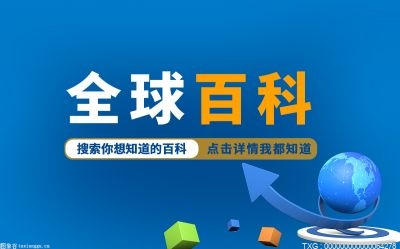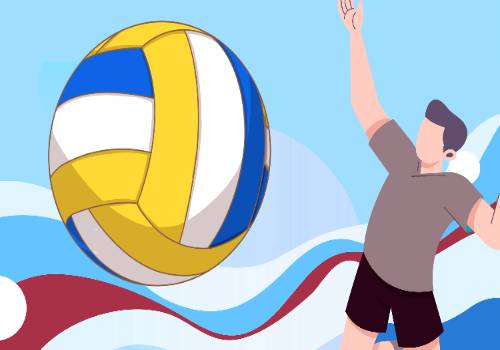In Chapter 7 of Purposeful Play, teachers explored the power of tapping into student interests. Our Early Years educators strive to understand students’ passions and interests in order to design meaningful and engaging learning experiences for our young learners. They challenge themselves to adopt a play mindset to cultivate empathy and help take students’ learning further through observation and questioning.
Our EY teachers adapt their versatile classrooms and materials to meet the needs and interests of students as they continue to learn and grow through play. Keep reading below for specific examples from our Early Years teachers.
How are student interests reflected in our Early Years classrooms?
 (资料图)
(资料图)
Student Interests in
K3
K3 students love experiencing the world with all their senses. Seeing, hearing, smelling, touching, and even tasting things create deep connections in their minds. Because they are so interested in the outdoors, we try to give students lots of opportunities to learn outside the classroom: balcony play, outdoor classroom play, and rooftop garden play.
Students Interests in
K4
Students created stories with their favorite characters. One student"s cat hopped into the other student"s car...and you can imagine what could happen in their shadow puppet show. It brought wonders for different light sources and the change of shadows as the light changed. Students interacted and exchanged their ideas, creating stories, developing communication and social skills, and integrating all their learning together in making their own stories. They all wanted to be performers. Again, their joy of play, passion, and interests posed the problems, and they solved their issues on their own. Their creativity creates new worlds and integrates all their learning together to make their own stories.
Student Interests in
K5
K5 students are immersed in the simplicity of unstructured play offering an environment that allows them to choose, making their own –creating space where they feel valued and find ownership. They are building using 3D shapes - magnetic sets, exploring sea animals in our water table, and reading books they chose and are interested in. They are playing and learning together!
Student Interests in
Creative Arts
Students are able to choose one of three learning centers to create stories through art: CASTLE, RESTAURANT, and CHINESE GARDEN (see photo). These students had previously made clay insects of their choice as part of their materials exploration, and now they are using them in their imaginative play.
Student Interests in
PE
K5 PE students worked in groups to create an animal dance for our Imagination unit. Students chose to work in groups with others that had a similar interest in the animal they wanted to create a dance for.
Student Interests in
Mandarin
Apart from learning about our current units in Mandarin class, K5 students need to learn several Chinese characters. Students have the agency to choose the activity that they are interested in to learn the Chinese characters. Students who like to draw can choose a picture frame. Students can practice writing the characters they learn along the line of the picture at first and then draw anything they want inside the picture frame. Students who like to play with playdough can choose it to make Chinese characters. Students can also choose dot stickers to work on to help them memorize those characters. They can all achieve the same goal but with different interests.
Student Interests in
ICT
It"s party time! K4 learners dance around the "disco ball" that they code by themselves to celebrate their learning. They"re given choices when it comes to coding the light, whether it is a rainbow light, or whatever color they prefer. The goal is to solve the problem: code a sequence to keep the robot blinking the color light so we can party together. Computational thinking and system operation are not easy at their age. Facing the challenge, however, the young learners didn"t give up. They practiced being reflective by going over and checking the mistakes and fixing the codes. They showed their persistence by trying repeatedly before they made it.
What do our teams want you to know from this chapter?
K3
When people see the work of children as "cute" they undermine the intense and real effort it took the child to bring that vision to creation. (pp108-109)"Oh wow!" or "So cool!" Words we automatically say when children show us their work. But do we ever acknowledge the passion that went into it?Showing authentic interest in what interests our children helps strengthen the bond we have with our little ones. It communicates that we value them AND we value what they value.
K4
Student interest- an exploration- inquiry...it is all smoothly making connections. We all value the importance of motivating the students. It simply explains the need to understand their interests, learning style, and strengths.
Understanding the students is one of the most important roles as a teacher. Creating data for the students" interest and choices is continuously happening at school. That’s what we can do. They all have their own path and expression. What and how to listen to them is our role.
Teachers empower children by respecting their unique passion and building supportive relationships. We should build children"s voices and incorporate their interests in many ways. We can invite children to create their environment by making special books and providing various materials based on their interests.
This student-centered environment will empower students to take ownership of their learning and develop a love for learning. It will stay with them long after they leave the classroom.
K5
Even as teachers we sometimes forget what it is like to have the mindset of a child. If we bring ourselves back to that child-like place of curiosity and wonder, we can better relate to how our students respond to what we present to them in the classroom. We get at the heart of intrinsic motivation. For some students, activities like reading and writing can be a challenge, but if given the agency to choose what they can read and write about, children will often go above and beyond the expectations we as teachers have originally set. When a child is excited about his or her learning, the possibilities are endless!
Library
In library class, students can choose to read any books that interests them which helps to foster a love of reading and encourages students to explore different genres. The library provides students with a variety of books for them to choose from that cater to their individual interests and needs.
ICT
Technology at an early age has always been a controversial topic. Noticing that it"s inevitable to live without it either now or in the future, the question now turns to how to guide children to form a healthy mindset of using technology. Learning to be a digital citizen takes an effort from an early age. By tapping into students" interests, students learn to use thinking skills and be reflective each time when they face a new app. While being a consumer of technology, young students also learn to contribute by creating stories and writing instructional books. Furthermore, we value using technology with positive attitudes at school. All this shouldn"t just happen at school. When your child begs you for the iPad next time, can you provide more options for them? Would you make an agreement together and follow it?
PE
Tapping into student interest is important because it increases engagement, personalizes learning, improves memory retention, creates a positive emotional connection to learning, and develops lifelong learning habits. When students are interested in what they are learning, they are more likely to be engaged and motivated, leading to greater academic success. By personalizing the learning experience to meet the unique needs and interests of each student, teachers can create a more relevant and meaningful learning experience. This can also lead to better memory retention and long-term learning outcomes. Additionally, when students have a positive emotional connection to learning, they are more likely to enjoy learning and have a positive attitude towards school. Finally, tapping into student interest can help to develop lifelong learning habits, as students are encouraged to pursue their interests and passions, leading to a greater sense of curiosity, creativity, and innovation throughout their lives.
Mandarin
"When you understand your students" passions, you"ll know better how to connect with them and infuse a sense of joy into all you do. "(p118)
Knowing students" interests can help teachers plan engaging lessons and activities and support students" learning journey. While letting students choose to do what they are passionate about, it also helps them learn with motivation and joy. Students would be more open to sharing their thoughts and expressing themselves.
滑动查看中文
在《有目的的游戏》第七章中,教师们探讨了挖掘学生兴趣的方法。我们的幼儿教育工作者努力了解学生的热情和兴趣,以便为我们的年轻学习者设计和提供有意义和吸引人的学习体验。他们挑战自己,采用游戏思维来培养同理心,并通过观察和提问帮助学生进一步学习。
我们的幼儿教师调整他们的多功能教室和材料,以满足学生的需求和兴趣,让他们在玩耍中继续学习和成长。请继续阅读我们幼儿教师的教学上具体例子。
学生的兴趣如何反映在我们的幼儿课堂上?
激发学生的兴趣
K3
k3学生喜欢用他们所有的感官体验世界。看到、听到、闻到、触摸,甚至品尝事物,都会在他们的脑海中产生深刻的联系。因为他们对户外活动很感兴趣,所以我们尽量给学生提供很多课外学习的机会:阳台游戏、室外课堂游戏和屋顶花园游戏。
激发学生的兴趣
K4
学生们用他们最喜欢的人物创作故事。一个学生的猫跳上了另一个学生的车。你可以想象在他们的皮影戏中会发生什么。它为不同的光源带来了奇迹,随着光线的变化,阴影的变化。学生们相互交流,创造故事,发展沟通和社交技能,并将他们所学的知识整合在一起,制作他们自己的故事。他们都想成为表演者。同样,他们的玩耍乐趣、激情和兴趣带来了问题,他们自己解决了问题。他们的创造力创造了新的世界,并将他们所有的知识整合在一起,创造了他们自己的故事。
激发学生的兴趣
K5
k5学生沉浸在简单的无结构的游戏中,提供了一个允许他们选择的环境,创造他们自己创造的空间,在那里他们感到被重视并找到所有权。他们正在使用3D形状——磁性装置,探索地下水位中的海洋动物,阅读他们选择和感兴趣的书籍。他们在一起玩耍和学习!
学生的兴趣
艺术创作
学生可在“城堡”、“餐厅”、“中国花园”(见图)三个学习中心中任选一处,通过艺术创作故事。这些学生以前选择制作粘土昆虫作为材料探索的一部分,现在他们在用它们进行富有想象力的游戏。
学生的兴趣
体育
K5体育学生分组为我们的想象力单元创造了一种动物舞蹈。学生们选择了和对动物有相似兴趣并为之舞蹈的学生组成小组。
学生的兴趣
中文
K5的学生除了在中文课上学习我们现有的单元外,还需要学习几个汉字。学生可以自主选择自己感兴趣的活动来学习汉字。喜欢画画的同学可以选择一个画框。学生可以先沿着图画的线条练习书写他们所学的汉字,然后在画框内画任何他们想画的东西。喜欢玩橡皮泥的同学可以选择橡皮泥来制作汉字。学生们还可以选择点贴纸来帮助他们记忆这些字符。他们都可以达到相同的目标,但有不同的兴趣。
学生兴趣
信息技术
派对时间到了!K4学习者围着他们自己编写的“迪斯科球”跳舞,以庆祝他们的学习。当涉及到编程光源时,他们可以选择,无论是彩虹光,还是任何他们喜欢的颜色。我们的目标是解决这个问题:编码一个序列,让机器人不停地闪烁彩灯,这样我们就可以一起聚会了。在他们这个年纪,计算思维和系统操作并不容易。然而面对挑战,这些小小的的学习者并没有放弃。他们通过检查错误和修改代码来练习反思。他们通过反复尝试最后成功,显示了他们的毅力。
我们的团队希望您从这一章中了解什么?
K3
当人们认为孩子们的作品“可爱”时,这个表达就削弱了孩子们为实现这一愿景所付出的专注和努力。(pp108 - 109)
“哦,哇!”或“太酷了!”当孩子们向我们展示他们的作品时,我们会自动说出这些话。但我们是否感受到投入其中的热情?
对孩子感兴趣的事情表现出真正的兴趣,有助于加强我们与孩子之间的联系。它传达的信息是,我们重视他们,我们也重视他们所重视的事物。
K4
学生的兴趣——探索——探究……这一切都是顺利地建立联系。我们重视学生激励的重要性。它解释了了解他们的兴趣、学习风格和优势的必要性。
理解学生是作为教师这个角色需要掌握的一个技能。为学生的兴趣和选择积累数据在学校不断发生。这就是我们应该做的,孩子们都有自己的方法和表达方式。我们的角色是倾听什么以及如何倾听。
教师通过尊重孩子们独特的热情和建立相互支持的关系来赋予他们力量。我们应该鼓励孩子们的声音,并在许多方面纳入他们的兴趣。我们可以根据孩子们的兴趣,制作特别的书籍和提供各种材料,邀请他们创造自己的环境。
这种以学生为中心的环境将使学生掌握自己的学习,并培养对学习的热爱。在他们离开教室后很长一段时间里,这些记忆还会伴随他们。
K5
即使作为教师,我们有时也会忘记孩子的心态是什么样子的。如果我们把自己带回到那个充满好奇和具有好奇的地方,我们就能更好地了解学生们对我们在课堂上向他们展示的东西的反应。我们找到了内在动机的核心。对于一些学生来说,像阅读和写作这样的活动可能是一个挑战,但如果让他们选择阅读和写作的内容,孩子们通常会超出我们作为教师最初设定的期望。当一个孩子对他或她的学习感到兴奋时,可能性是无限的!
图书阅读课
在图书馆阅读课上,学生可以选择读任何他们感兴趣的书,这有助于培养阅读的爱好,并鼓励学生探索不同的题材。图书馆为学生提供各种各样的书籍供他们选择,以满足他们个人的兴趣和需要。
信息技术课
技术早期一直是一个有争议的话题。我们发现无论是现在还是将来,没有科技的生活是难以前进的,现在的问题是如何引导孩子形成健康的使用科技的心态。学习成为数字公民需要从小就开始培养。通过挖掘学生的兴趣,学生们学会了使用思维技能,并在每次面对新的应用程序时进行反思。在成为技术消费者的同时,小小的学生们也学会了通过创作故事和编写教学书籍来做出贡献。此外,我们重视在学校以积极的态度使用技术。这一切不应该只发生在学校。当你的孩子下次向你要iPad时,你能给孩子们提供更多的选择吗?你们可以一起制定一个协议并遵守它吗?
体育课
挖掘学生的兴趣是很重要的,因为它可以提高参与度,个性化学习,提高记忆力,建立积极的学习情感联系,并培养终身学习习惯。当学生对他们所学的内容感兴趣时,他们更有可能参与其中并受到激励,从而取得更大的学术成就。通过个性化学习体验来满足每个学生的独特需求和兴趣,教师可以创造更相关和更有意义的学习体验。这也能提高记忆力和长期学习效果。此外,当学生对学习有积极的情感联系时,他们更有可能享受学习,对学校有积极的态度。最后,挖掘学生的兴趣可以帮助培养终身学习习惯,因为学生被鼓励追求自己的兴趣和激情,从而在一生中培养更强的好奇心、创造力和创新意识。
中文课
“当你了解你的学生的热情时,你就会更好地了解如何与他们联系,并将快乐注入你所做的一切。”(p118)
了解学生的兴趣可以帮助教师计划有吸引力的课程和活动,并支持学生的学习旅程。在让学生选择做他们感兴趣的事情的同时,也能帮助他们充满动力和喜悦地学习。学生将更加开放地分享他们的想法和表达自己。
关键词:




















 营业执照公示信息
营业执照公示信息